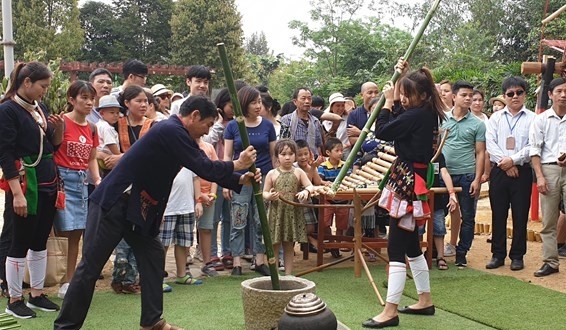A string of activities will take place at the Vietnam National Village for Ethnic Culture and Tourism in the Dong Mo tourism area of Son Tay town, Hanoi from February 1 to 28, to celebrate the Lunar New Year 2021.

Illustrative image.
Due to the continued implementation of COVID-19 pandemic prevention and control, the scale of activities in February 2021 is to adhere to the following plans:
Option 1: Activities will be of a scale appropriate to the COVID-19 pandemic. If the COVID-19 epidemic breaks out in the locality in February 2021 (Hanoi), the activities of the ethnic group should be restricted; limiting the concentration of people, ensuring safety, preventing and combating the COVID-19 pandemic.
Option 2: If by mid-February 2021, there are no orders from the competent authorities on the suspension of mass-gatherings, the programme will be fully implemented. All activities will go ahead according to plan, in full hopes of attracting tourists.
Under the theme “Colours of spring from every corner of the country”, the programme will feature diverse cultural activities featuring traditional culture, customs and lunar new year celebrations of all ethnic groups.
Cultural activities in February will draw the participation of 100 people of 14 ethnic groups: Tay, Dao, Nung, Mong, Thai, Muong, Kho Mu, Bahnar, Ta Oi, Co Tu, Xo Dang, RagLai, Ede and Khmer from more than 12 localities.
Highlights of the programme include the restaging of a traditional Thai ritual to pray for good luck for the New Year, common in the northwestern mountainous province of Son La, as well as an arts exchange honouring the spring time of the Mong ethnic people.
Visitors to the programme are also invited to taste delicious local dishes and take part in exciting folk games and cultural activities, such as the “Xoe” dance, bamboo pole dance, and “pao” (cloth ball) throwing.
In addition, there will be performances introducing the traditional musical instruments of ethnic groups living in the Central Highlands region, including the gongs and bamboo-made xylophones of Central Highlanders such as the dinh gong, ding put, and t’rung.